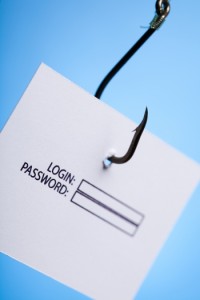Businesses Defenseless Against Hardware Keyloggers

When news broke last week that security researchers had found more than2 million stolen passwords hidden on a hacker’s website, it didn’t take long for media around the world to get on the case. It appears the passwords were stolen over many months, and from users of Facebook, Twitter, Google, LinkedIn and many other sites.
The story that seemed to get the most attention from the media and from security experts was what these 2 million passwords told us about the password habits of users. That they were awful. Not that that’s really news, but still, once again we discovered that the most common passwords included in the haul were 123456, 111111, and perhaps worst of all, password.
However, we noticed something else, something that other security experts seemed to miss completely. The initial suspect in the heist was a keylogger, a tiny piece of malware that will infect computers, steal things like logins and passwords, and pass them back to the hackers.
On the very same day the media frenzy started, we noticed that a security firm OPSWAT revealed some very scary test results. When they planted a basic keylogger on one of their test computers, and ran scans with more than 40 of the most popular consumer and business antivirus products over two weeks, only one product caught the hardware keylogger. Which probably means most consumers and even small businesses probably won’t be able to detect it either.
While the better antivirus brands are generally good at catching the most common malware, a study by the University of Alabama found that those same products only catch around 25% of the more advanced malware. And that’s the stuff that can do the most harm.
Keyloggers are typically in search of logins and passwords, but they don’t just log what you type. They can also capture screenshots of what’s on your computer, screenshots of the websites you visit and the folders you open, and even what you search for. And software isn’t the only variety. There’s a growing trend towards hardware keyloggers – keyloggers designed to look identical to a plug or connector you’d expect to find at the back of a computer or even a cash register. One such hardware keylogger was recently found plugged into the back of a cash register at a Nordstrom store in Florida.
If hardware keyloggers make their way on to computers in your business, the hackers may be able to steal logins and passwords to your website or bank account. They might also be able to steal payroll and customer information. They might even be able to hop from your computers to your website, and from there infect visitors to your site. Which could end up with your business being blacklisted by the search engines until you solve the problem.
So what can you do cripple this menace?
- Start by talking to your employees, explain what a hardware keylogger is, how it can threaten your workplace, and how you can all work together to protect against them.
- Require all your employees to use anti-keylogger software, like Key Scrambler (free). They won’t protect your business against every type of keylogging but are a good defense against the more common software based. Some work by instantly encrypting or scrambling all your keystrokes so that they’re unusable to hackers.
- Make sure you and your employees use one of the many safe surfing tools or plugins, like Web of Trust (WoT). As users become more wary of malware hidden in email attachments, hackers are turning to websites instead. Known as watering holes, hackers will find vulnerable websites, load them with keylogging malware, and simply lie in wait for visitors to those sites. SiteLock is finding as many as 5,000 small business web sites every single day already compromised and requiring malware removal. Safe surfing tools will help alert you of suspicious or dangerous websites before you click on them.
- Always have good antivirus software on every computer and device you use in your business and at home. And encourage your employees to do the same. Some of the best is free, including for your smartphone and tablet. And scan often — at least once a week is recommended.
- All employees should change their passwords often and think about passphrases instead.
- Be careful what you allow employees to download and install. Poor security habits and hygiene are a leading contributor to malware infections. Slow down, guard up, verify first, and only download if you’re really sure and you really need to.
For more information on protecting your business from cybersecurity threats call SiteLock at 855.378.6200.





